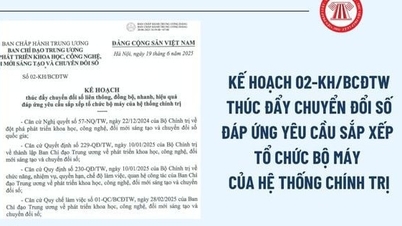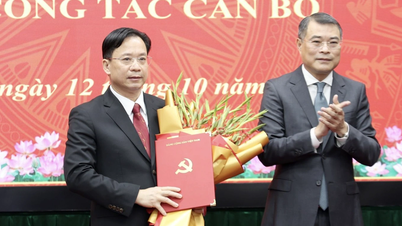Legal foundation and clear contributions
In practice, the 2008 Law provides the State with tools to support a number of strategic projects, including tax incentives, land support, credit and technical infrastructure policies within the legal framework. These policies, although limited in scale and detail, have contributed to forming the habit of investing in R&D in a number of large enterprises and domestic startup groups. This reality proves that the Law can create leverage to create an ecosystem, although it needs to be continuously improved.
Since its promulgation, the Law on High Technology has only been adjusted in a narrow scope, the provisions related to tax incentives were amended in 2013 and 2014, but there has never been a comprehensive amendment to keep up with the speed of global technology transformation. This has led to a gap: many regulations are general, criteria are not quantified, not synchronized with other specialized laws, and difficult to meet the requirements of promoting high-tech industry on a larger scale. Experts, businesses and management agencies have repeatedly expressed their opinions on the need to amend and update the legal framework to comply with the National Strategy Resolution.
A concrete manifestation of this gap is that Vietnam's spending on R&D is still modest compared to many developed economies .
According to official figures and international reports, Vietnam’s R&D expenditure to GDP ratio is around 0.4% (according to WIPO/World Bank data in recent years), far lower than the 3–5% level of many leading economies. This figure shows great room for increasing investment and improving R&D efficiency, but also highlights the need for innovation in policies and implementation mechanisms.

New move: amending the law, institutionalizing national strategy
Recognizing the shortcomings and the need for breakthroughs in science and technology, the Party and State leaders have issued new strategies, including Resolution 57-NQ/TW of the Politburo on breakthroughs in science and technology development, innovation and national digital transformation. On that basis, the Ministry of Science and Technology is drafting the revised Law on High Technology, with the orientation of quantifying incentives, focusing on R&D, commercializing research results and ensuring technological security. The goal is to transform the law from a "general framework" to a quantitative, transparent and accountable enforcement tool.
In September 2025, the Ministry of Justice organized a Council to review the draft Law on High Technology (amended), with the participation of representatives from many ministries and branches to strictly control the scope of regulation, feasibility and compatibility with the legal system, a sign that the revision process is being carried out with greater caution. The review opinions clearly stated the need to quantify criteria and design a strong enough incentive mechanism but with clear conditions to avoid policy abuse.

Law on High Technology (amended), with the orientation of quantifying incentives, focusing on R&D, commercializing research results and ensuring technological security.
The key point of this shift is not only to "amend the law" but also to change policy thinking: from general incentive support to responsible incentives, from individual support to building an R&D-production-commercialization ecosystem, from importing technology to mastering strategic technology. This is the spirit of autonomy, both encouraging international cooperation and enhancing endogenous capacity, helping Vietnamese enterprises develop high value-added products and protecting national interests.
More than 16 years after the Law on High Technology was enacted, its contribution to the formation of technology zones, stimulating R&D activities and creating an initial legal basis is clear. But to make the most of the opportunities of the Industrial Revolution 4.0 and realize the strategic goals for 2030-2045, Vietnam needs a stronger shift: laws must be specific, incentives must be quantified, mechanisms must be transparent and have a post-audit mechanism. At that time, the Law on High Technology (amended) will not only be a legal document but will become a strategic tool to bring high technology and the aspiration for technological autonomy into the heart of the country's new growth model.
Source: https://mst.gov.vn/hanh-trinh-hon-16-nam-luat-cong-nghe-cao-tu-nen-mong-den-buoc-chuyen-moi-197251012135329648.htm






![[Photo] Discover unique experiences at the first World Cultural Festival](https://vphoto.vietnam.vn/thumb/1200x675/vietnam/resource/IMAGE/2025/10/11/1760198064937_le-hoi-van-hoa-4199-3623-jpg.webp)

















![[Photo] General Secretary attends the parade to celebrate the 80th anniversary of the founding of the Korean Workers' Party](https://vphoto.vietnam.vn/thumb/1200x675/vietnam/resource/IMAGE/2025/10/11/1760150039564_vna-potal-tong-bi-thu-du-le-duyet-binh-ky-niem-80-nam-thanh-lap-dang-lao-dong-trieu-tien-8331994-jpg.webp)































































Comment (0)